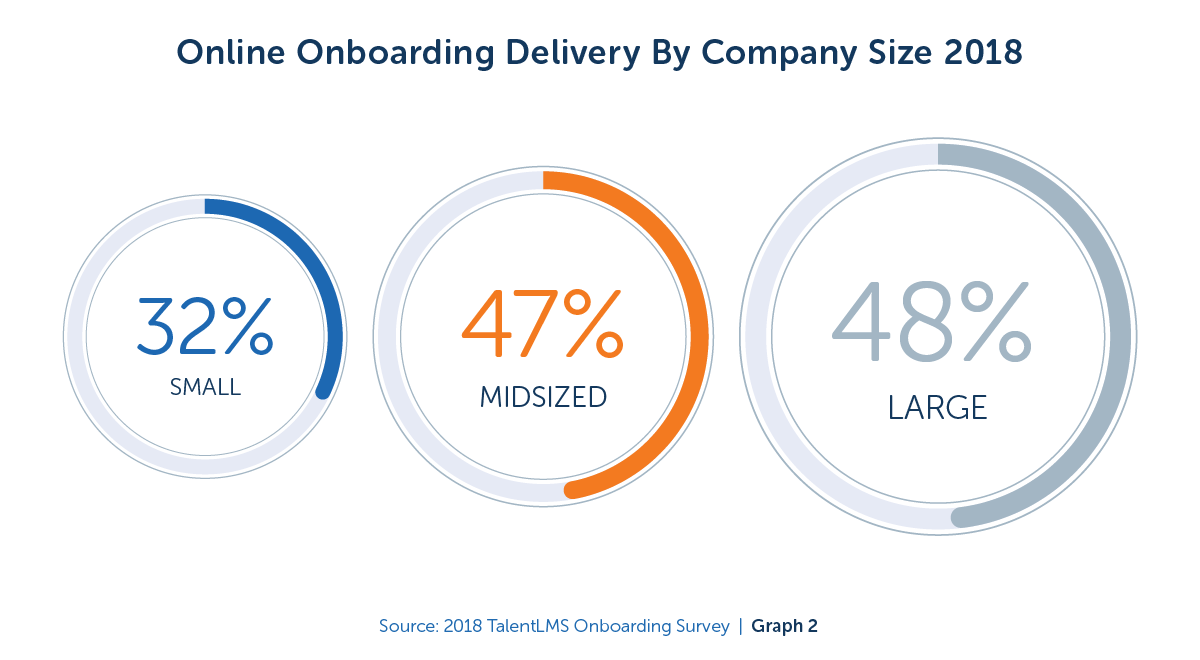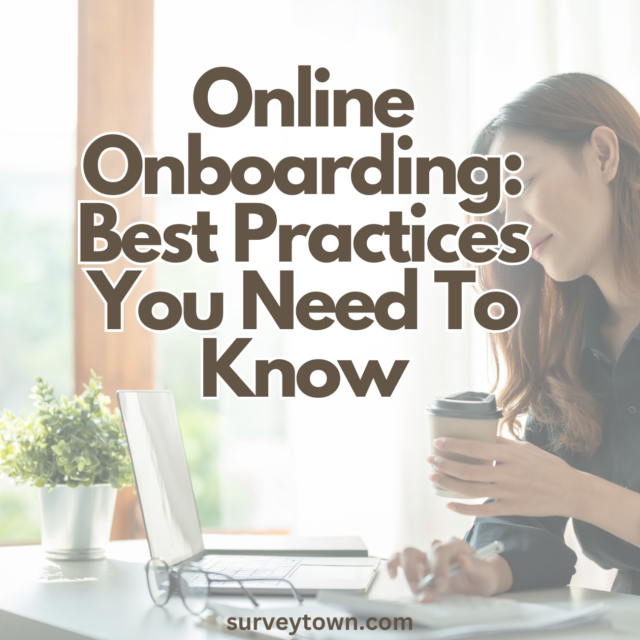Learn how to effectively onboard employees remotely using best practices and create a seamless onboarding experience for your virtual team.
Click here for our in-depth article about online employee onboarding!
The Power of Effective Remote Employee Onboarding
In today’s digital era, with more companies embracing remote work than ever before, it’s crucial to have a comprehensive program in place to ensure the success and satisfaction of your employees. A strong onboarding process significantly impacts engagement, productivity, and retention. When new hires feel supported from day one with all the necessary resources and information to excel remotely, they not only feel valued but also become highly motivated. This leads to increased job satisfaction, productivity rates, and better employee retention.
Remote employee onboarding establishes clear expectations for both the company and the individual. By using effective communication channels like video conferencing or virtual team introductions, you foster open lines of communication right from the start. Clearly outlining roles, responsibilities, goals, and objectives during this phase sets up your remote employees for success.
Essential Components for a Successful Remote Employee Onboarding Experience
Remote employee onboarding is a critical process that lays the groundwork for a fruitful and productive relationship between an organization and its new hires. In this section, we will explore the key elements that contribute to an effective remote onboarding experience.
1. Clear Communication
Effective communication is paramount during the remote onboarding process as it ensures that new employees have all the information they need to seamlessly integrate into your company. Here are some valuable tips for clear communication:
- Provide detailed instructions: Clearly outline what new hires can expect during their initial days, including any necessary paperwork, training materials, or equipment they may require.
- Utilize multiple channels: Make use of various communication tools such as email, video conferencing platforms, and instant messaging apps to facilitate seamless interaction with your remote team.
- Assign a dedicated point of contact: Designate someone within your organization who can readily address questions and provide guidance throughout the entire onboarding journey.
2. Technology Setup
Establishing the right technological infrastructure is crucial for enabling remote employees to perform their tasks efficiently. Consider these factors when setting up technology:
- Provide necessary hardware and software: Ensure that each new hire has access to all essential devices (e.g., laptops) and software applications required for their role.
- Offer technical support: Establish a system where employees can seek assistance if they encounter any technical issues while setting up or using company-provided technology.
- Conduct virtual tech orientation sessions: Schedule virtual sessions to familiarize new hires with relevant tools and platforms utilized within your organization.
3. Training
Comprehensive training plays a pivotal role in helping remote employees grasp their roles, responsibilities, and expectations from day one. Here’s how you can optimize training for remote onboarding:
- Develop online training modules: Create engaging e-learning courses or videos covering vital topics related to job functions, company policies, culture, etc.
- Encourage self-paced learning: Provide resources and materials that allow new hires to learn at their own pace, ensuring they have a solid understanding of the company’s processes.
- Schedule virtual training sessions: Conduct live training sessions via video conferencing platforms to facilitate real-time interaction and address any questions or concerns.
4. Virtual Team Introductions and Clear Expectations
Establishing connections with colleagues is crucial for remote employees’ sense of belonging within your organization. Consider these practices for virtual team introductions:
- Organize virtual meet-and-greet sessions: Arrange informal video calls where new hires can introduce themselves to their teammates, fostering a sense of camaraderie.
- Assign mentors or buddies: Pair new employees with experienced team members who can guide them through their initial days and help them navigate the remote work environment.
- Set clear expectations: Clearly communicate performance goals, deadlines, and key deliverables to ensure that new hires understand what is expected from them in their roles.

Expert Tips for a Seamless Remote Employee Onboarding Experience
When it comes to remote employee onboarding, following best practices is essential. As experts in the field, we can provide you with valuable insights and tips to ensure that your new hires have a smooth and successful transition into their roles. Here are some key strategies to consider when creating a comprehensive onboarding plan:
1. Personalize the Onboarding Experience
- Tailor the onboarding process to meet each individual employee’s unique needs and preferences.
- Welcome them with personalized messages, introductions, and resources that make them feel valued from day one.
- Assign mentors or buddies who can offer guidance and support during their initial weeks.
2. Maintain Regular Check-Ins
- Schedule regular check-ins with your new hires to address any questions or concerns they may have.
- Utilize video conferencing tools to facilitate face-to-face communication, fostering stronger connections.
- Encourage open dialogue and create a safe space where employees feel comfortable sharing their experiences.
3. Provide Necessary Resources
- Ensure that your new employees have easy access to all the tools, software, and equipment required for their roles.
- Establish an online repository of training materials, manuals, FAQs, etc., so they can easily refer back whenever needed.
- Offer virtual training sessions or webinars to help familiarize employees with company processes.
4. Foster Virtual Team Introductions
- Facilitate virtual introductions between your new hires and their team members right from the start.
- Organize engaging team-building activities such as virtual coffee breaks or happy hours to foster camaraderie.
- Promote collaboration by utilizing project management tools that encourage teamwork.
5. Set Clear Expectations
- Clearly communicate job responsibilities, performance expectations, and goals right from day one.
- Provide detailed information about company policies, procedures, and culture in a remote setting.
- Establish clear channels of communication so that employees know the best way to reach out when needed.
6. Emphasize Continuous Learning
- Offer ongoing training opportunities beyond the initial onboarding sessions to support their growth.
- Encourage self-paced learning through online courses or resources tailored to their specific roles.
- Provide access to professional development programs or certifications for continuous improvement.
By implementing these expert-recommended best practices, you can create a positive and engaging onboarding experience for your remote employees. Remember, effective onboarding sets the foundation for long-term success and employee satisfaction in a virtual work environment. Let us guide you through this process with our expertise and ensure that your new hires feel supported every step of the way.
Enhancing Remote Employee Onboarding With the Best Tools and Technologies
Technology in today’s digital age is a game-changer for remote employee onboarding. With the right tools and platforms, you can streamline the process, enhance communication, and ensure a seamless transition for new hires. Get ready to revolutionize your onboarding experience with these top tools and technologies.
1. Video Conferencing Software
Virtual meetings are an integral part of remote onboarding. Platforms like Zoom, Microsoft Teams, or Google Meet provide face-to-face interactions regardless of geographical barriers. These powerful tools enable real-time communication, screen-sharing capabilities, and even recording options for future reference.
2. Project Management Tools
When it comes to assigning tasks and tracking progress during onboarding, project management software becomes invaluable. Consider using Asana or Trello to create task lists, set deadlines, and assign responsibilities to team members involved in the process.
3. Learning Management Systems (LMS)
LMS platforms such as Moodle or TalentLMS serve as centralized hubs for training materials and resources. With these systems in place, you can develop interactive courses tailored specifically for remote employees’ needs while also monitoring their progress through quizzes or assessments.
4. Collaboration Tools
Fostering teamwork among your virtual workforce is essential during onboarding. Collaboration tools like Slack or Microsoft Teams offer instant messaging features that facilitate quick discussions between team members without overwhelming email inboxes.
5. Virtual Whiteboards
Brainstorming ideas visually is made easy with collaborative whiteboard applications such as Miro or Mural during virtual meetings. Together in real-time sessions, teams can create mind maps or diagrams that enhance creativity.
6. Document Sharing Platforms
Securely storing important documents is crucial when working remotely; cloud-based file-sharing services like Google Drive or Dropbox simplify file sharing with new hires while maintaining version control and accessibility from anywhere at any time.
7. Feedback & Performance Tracking Tools
Providing feedback is vital throughout the onboarding journey. Leverage performance tracking software such as 15Five or Lattice to offer continuous feedback, set goals, and monitor progress for new employees.
Harness the immense power of cutting-edge tools and technologies to craft a flawless onboarding journey for your remote hires. Select options that perfectly match your company’s requirements, guaranteeing user-friendliness for both new team members and existing employees. With the perfect technology at your disposal, you’ll effortlessly onboard remote staff with the utmost effectiveness and efficiency.
Measuring the Success of Your Remote Onboarding Program
Tracking and measuring the effectiveness of your program is essential to ensure that your new hires have a seamless integration into your organization. Let me share with you some key metrics to evaluate the success of your remote onboarding program:
1. Time-to-Productivity
Measure how quickly new employees become fully productive in their roles. This provides valuable insights into the efficiency of your onboarding process and helps identify any bottlenecks or gaps in training.
2. Employee Satisfaction
To gauge employee satisfaction with the onboarding experience, conducting surveys or interviews is essential. Ask questions about their level of preparedness, clarity of expectations, and overall satisfaction with the support provided during their transition.
3. Retention Rates
Monitoring retention rates among newly onboarded remote employees compared to those who went through traditional on-site onboarding is vital. A higher retention rate indicates that your remote onboarding program effectively engages and retains talent.
4. Performance Metrics
Tracking performance metrics specific to each role or department within your organization allows for a comprehensive evaluation. Compare the performance of remotely onboarded employees against established benchmarks or previous cohorts who underwent different onboarding methods.
5. Feedback From Managers and Mentors
Gathering feedback from managers and mentors involved in the remote employee’s training and integration process provides valuable insights for improvement opportunities.
To effectively measure these metrics, consider utilizing online survey tools, collaboration platforms, project management software, or HR analytics systems tailored for tracking employee progress during their initial stages at a company.
By regularly evaluating these metrics based on data-driven insights rather than relying solely on anecdotal evidence or assumptions, you can continuously improve your remote onboarding strategies.
Remember that measuring success goes beyond just numbers; it also involves creating an environment where new hires feel supported, engaged, and empowered to contribute their best work. Strive for ongoing improvement, adaptability, and a commitment to providing an exceptional onboarding experience for your remote employees.

